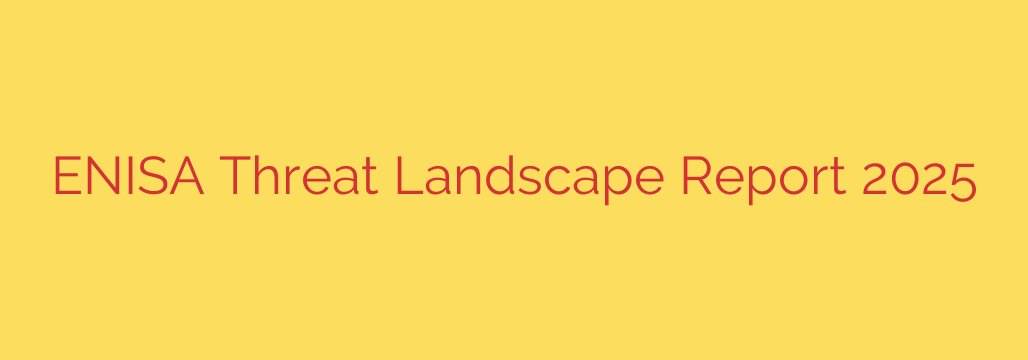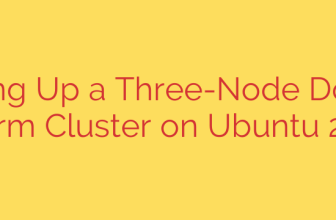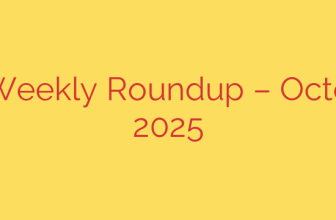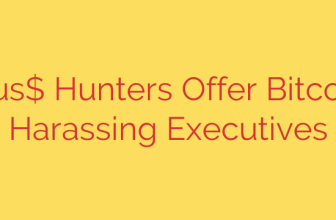
Navigating the 2025 Cyber Threat Landscape: Key Dangers and How to Prepare
The digital world is evolving at a breakneck pace, and with every technological leap forward, the landscape of cyber threats shifts and expands. Staying ahead of these dangers is no longer just an IT department concern; it’s a fundamental requirement for business survival and personal security. As we look toward 2025, several dominant and emerging threats are defining the digital battlefield.
Understanding these key vectors of attack is the first step toward building a resilient defense. Here’s a breakdown of the most significant cybersecurity challenges on the horizon and what you can do to prepare.
1. Ransomware’s Relentless Evolution
Ransomware remains one of the most destructive and profitable forms of cybercrime. However, the tactics have grown far more sinister than simply encrypting files. Modern ransomware attacks are now multi-layered extortion campaigns.
Threat actors first steal massive amounts of sensitive data before encrypting the network. They then demand a ransom not only to unlock the files but also to prevent the public release of the stolen information. This “double extortion” model has proven incredibly effective. The primary shift is from simple data encryption to multi-faceted extortion schemes that now often include DDoS (Distributed Denial of Service) attacks or direct harassment of a victim’s customers and partners to apply additional pressure. This makes recovery from backups alone an incomplete solution, as the threat of a data breach still looms.
2. The Rise of AI-Powered Cybercrime
Artificial intelligence is a double-edged sword. While it offers incredible potential for security defenses, it is also becoming a powerful tool for cybercriminals. Attackers are now leveraging AI to create highly sophisticated and difficult-to-detect threats.
This includes crafting hyper-realistic phishing emails that are grammatically perfect and contextually aware, making them far more convincing than their predecessors. AI is also being used to create deepfake audio and video for social engineering attacks, where a CEO’s voice might be convincingly cloned to authorize a fraudulent wire transfer. AI is no longer a futuristic concept; it’s a tool actively used by threat actors to enhance the scale, speed, and sophistication of their campaigns.
3. Weaponizing Trust: The Supply Chain as a Battleground
Why attack a fortified castle when you can sneak in through a weakly defended supplier? This is the core principle behind supply chain attacks, which are becoming increasingly common and devastating. Cybercriminals are targeting smaller, less secure software vendors, service providers, and contractors to gain a foothold into their much larger, higher-value clients.
A single compromised vendor can provide attackers with a gateway to hundreds or thousands of their clients, creating a massive ripple effect from a single breach. These attacks are particularly insidious because they exploit the trust inherent in business relationships, turning a trusted software update or service provider into an attack vector.
4. Digital Frontlines: Geopolitical Tensions Fuel Cyber Attacks
As global conflicts and tensions rise, the digital realm has become a critical battleground. Nation-state actors and state-sponsored hacking groups are increasingly using cyberattacks to conduct espionage, disrupt critical infrastructure, and push political agendas.
These attacks are not limited to government targets. Private companies in sectors like energy, finance, healthcare, and technology are often caught in the crossfire. Cyberattacks are increasingly used as an extension of foreign policy and military strategy, meaning businesses can become targets based purely on their industry or country of origin. This trend blurs the lines between cybercrime and cyber warfare, raising the stakes for organizations everywhere.
5. The Infodemic: Misinformation and Disinformation at Scale
While not a direct hacking technique, the strategic spread of misinformation (the unintentional sharing of false information) and disinformation (the deliberate creation and sharing of false information) poses a significant threat. These campaigns are designed to manipulate public opinion, sow discord, damage brand reputations, and even influence market trends.
For businesses, a targeted disinformation campaign can lead to a loss of customer trust, stock price volatility, and a public relations crisis. These campaigns erode trust, manipulate public opinion, and can directly harm brand reputation and market stability, making information integrity a key pillar of modern security.
How to Fortify Your Defenses: Actionable Security Measures
While the threat landscape may seem daunting, a proactive and layered security strategy can significantly reduce your risk.
- Embrace a Zero-Trust Architecture: Operate on the principle of “never trust, always verify.” This means authenticating and authorizing every user and device trying to access resources on your network, regardless of whether they are inside or outside the perimeter.
- Mandate Multi-Factor Authentication (MFA): This is one of the single most effective controls you can implement. MFA provides a crucial layer of defense that can block the vast majority of automated and password-based attacks, even if credentials are stolen.
- Prioritize Employee Security Training: Your employees are your first line of defense. Regular, engaging training on how to spot phishing attempts, practice good password hygiene, and handle sensitive data securely is essential to building a strong security culture.
- Develop a Robust Incident Response Plan: It’s no longer a matter of if you will be attacked, but when. Have a clear, well-rehearsed plan for how to detect, contain, eradicate, and recover from a security incident to minimize damage and downtime.
- Conduct Rigorous Supply Chain Vetting: Thoroughly assess the security posture of all third-party vendors and partners who have access to your data or network. Ensure their security standards meet or exceed your own.
Ultimately, navigating the 2025 cyber threat landscape requires vigilance, adaptability, and a commitment to proactive security. By understanding the evolving tactics of threat actors and implementing robust, multi-layered defenses, you can protect your organization and stay one step ahead in this ongoing digital arms race.
Source: https://securityaffairs.com/182978/security/reading-the-enisa-threat-landscape-2025-report.html








